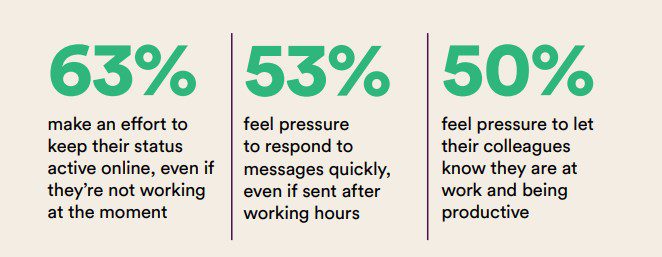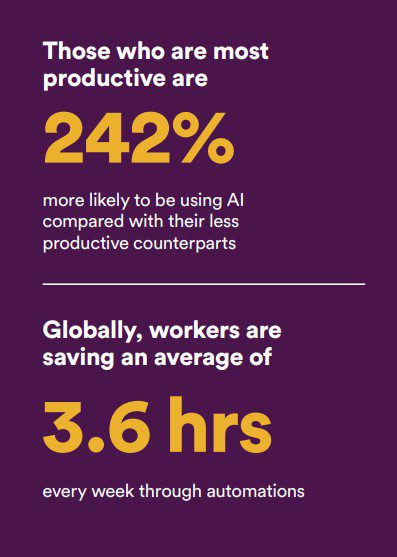Welcome to the ‘productivity theater’
It’s time to close the curtain, and rethink productivity at work.
Why You Should Care
Productivity is a real problem for businesses.
And the main issue is that they are focusing on inputs not outputs.
Here's how to fix this, according to Slack's research.
The world of work has gone through so much change over the past three years. But there are a few things that haven’t progressed.
According to Slack’s The State of Work in 2023 report, we are still stuck in the old school view that working longer hours means you are more productive.
In this model, input, rather than output, is prioritized – this is to the detriment of actual productivity.
Because employees know that their productivity is being measured by their activity (such as the number of hours they worked, how many emails they sent, how many meetings they attended, or how quickly they respond to messages), they are not motivated to put the effort in to do great work.
Instead, they embrace something called ‘productivity theater’.
A recent report by Visier defined this as occurring “when employees prioritize performative work over more valuable tasks. Here, performative work refers to activities that mostly create the appearance of busily generating product and value rather than contributing to meaningful business results.”
Slack’s report confirmed this. 32% of the 18,000 employees surveyed said they spend time on performative work that doesn’t contribute to the organization goals to appear productive.

Credit: Slack, The State of Work in 2023.
Visier’s survey of 1,000 US workers also found that 43% spend more than ten hours on these productivity theater tasks a week, and one in three admitted they prioritize tasks based on what is most visible to others, not what is most valuable to the business.
AI is part of the solution
This is bad news for organizations – they aren’t getting the best out of their people.
Thankfully, employers are aware – although one in three told Slack they were tracking activity metrics, only 15% thought this was a good way to think about productivity.
It is time for them lean more into technology, and particularly AI and automation, to fix this ‘productivity theatre’, and move from focusing on inputs to outputs.
Currently 60% of employees say their organization has not incorporated AI. But for those that have, they were 90% more likely to report higher levels of productivity.

Credit: Slack, The State of Work in 2023.
77% of employees said automating routine tasks would positively impact their productivity.
The best use cases for AI at work, according to Slack, are writing and editing text (58%), video-to-text transcripts and scripts for customer support (49%), image and video creation (44%) and writing code (42%).
Slack’s senior vice-president of research and analytics Christina Janzer tells UNLEASH: “For HR…and business leaders, now is the time to reassess the tools and processes you use to not just drive productivity, but also to create a happier, more motivated workforce.”
Of course, AI isn’t the only solution here. There is also a need for culture change around expectations at work – 53% of employees told Slack they felt pressured to respond quickly to messages or emails, especially outside of working hours.
But this is impacting their work-life balance and wellbeing – and it is well-known that there is a link between productivity and job satisfaction, engagement and wellbeing.
Slack’s report found that 82% of employees think that being happy and engaged drove productive work.
The key to this is managers. But they need more support from HR and senior leadership.
43% of people managers surveyed by Slack say helping their teams stay motivated was their top challenging, and 36% said they were spending too much time in meetings and helping teams with their work-life balance.
Slack concluded that it is time for HR and employers to have a “mental palate cleanser and fresh ideas” focused around on productivity, wellbeing and technology.
If this article caught your interest, you can find more like it here. Enjoy!
Sign up to the UNLEASH Newsletter
Get the Editor’s picks of the week delivered straight to your inbox!

Chief Reporter
Allie is an award-winning business journalist and can be reached at alexandra@unleash.ai.
-
Topics
Strategy and Leadership
